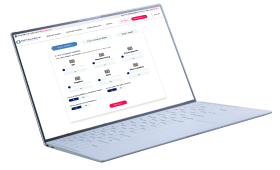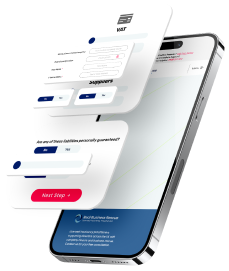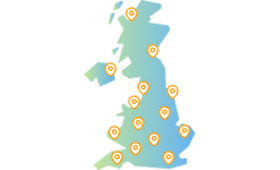
Understand your company's position and learn more about the options available
Require Immediate Support? Free Director Helpline: 0800 644 6080
Free Director Helpline: 0800 644 6080
Updated:
As a sole trader, there is no legal distinction between yourself as an individual and your business. This means that should your business begin experiencing financial concerns – or if the worst happens and the business becomes insolvent – you, as its owner, will be expected to cover any financial shortfalls and repay any outstanding borrowing using your personal funds. In the worst cases, this may mean that a sole trader has to consider personal insolvency options such as an IVA or bankruptcy, if business debt cannot be repaid.
When a limited company becomes insolvent, the directors receive protection from personal liability via what is known as the ‘veil of incorporation.’ The difference between this and a sole trader insolvency is that sole trader businesses are not regarded as separate legal entities.
For you, it becomes a personal insolvency issue whereby you are wholly responsible for the debts of your business, and therefore at risk of personal bankruptcy if you can’t repay creditors.


Get an instant understanding of your:
Plus much more ...
Start The 60 Second Test
A slow and sometimes barely noticeable business decline can occur due to various factors, including late invoicing, slow collection of debts, and holding excessive amounts of stock. Even if you are making a profit, it does not change the fact that there is insufficient cash to sustain day-to-day business operations, and that is often why businesses fail.
Seeking professional insolvency help is vital as soon as you know there is a problem, because if the business enters insolvency, your business and personal debts will be combined and you may have to declare bankruptcy.
There are two formal routes when sole traders become insolvent:
An Individual Voluntary Arrangement is a formal and legally-binding insolvency procedure which usually lasts for around five years. If an insolvency practitioner believes the business is viable, they may recommend an IVA and begin formal negotiations with your creditors.
Once an agreement is reached, creditors are unable to take any legal action to recover the debts included within the arrangement. By the same token, you must continue to repay the agreed amounts throughout the IVA term, otherwise you risk a creditor or the supervisor of your IVA petitioning for your bankruptcy.
Is your company insolvent?
If your company is insolvent you have a number of legal responsibilities that you must adhere to. Taking steps to protect creditors from further losses by contacting a licensed insolvency practitioner can help ensure you adhere to these duties.
The team are available now - 0800 644 6080
60 Second Test Find Your Nearest Office
Benefits of an IVA
Enforced bankruptcy
If one of your creditors is owed £750 or more, and has unsuccessfully tried to recover the debt via a County Court Judgement and Statutory Demand, they can petition for your bankruptcy through the courts. This figure has increased to £10,000 as per the Government's temporary measures which will apply for the period 1 October 2021 to 31 March 2022.
HMRC are known to take this route to recover arrears of tax and National Insurance from businesses they believe to be insolvent, but if it is still viable there may be ways to improve the financial situation – by refinancing, for example, or negotiating an IVA.
Can’t pay CBILS or Bounce Back Loan?
Don't worry - there are thousands of other company directors in the same position. If you are struggling to keep up with your Covid loan repayments, speak to a member of the Real Business Rescue team to discuss your options. It's Free & Confidential.
The team are available now - 0800 644 6080
Declaring bankruptcy is generally a measure of last resort, but in some instances it can relieve a period of extreme stress and pressure for sole traders, even though personal and business assets are lost.
If your company is struggling with unmanageable debts, squeezed cash flow, or an uncertain future, you are far from alone. We speak to company directors just like you every single day, and we are here to give you the help and advice you need.
Call our team today on 0800 644 6080
The bankruptcy petition form can be convoluted and complex to complete, so you may want to seek professional help in this respect. If you believe your sole trader business is insolvent, Real Business Rescue can confirm your financial situation and make professional recommendations based on your individual circumstances.
We are insolvency specialists working from a network of 100 UK offices, and will arrange a free same-day meeting in complete confidence.
Still unsure whether liquidation is right for your company? Don't worry, the experts at Real Business Rescue are here to help. Our licensed insolvency practitioners will take the time to understand the problems your company is facing before recommending the best course of action going forward based on your own unique circumstances.

Complete the below to get in touch
For Ltd Company Directors
Get An Instant Understanding Of Your:
Plus much more ...
We provide free confidential advice with absolutely no obligation.
Our expert and non-judgemental team are ready to assist directors and stakeholders today.

Understand your company's position and learn more about the options available

Find your nearest office - we have more than 100 across the UK. Remote Video Meetings are also available.

Free, confidential, and trusted advice for company directors across the UK.